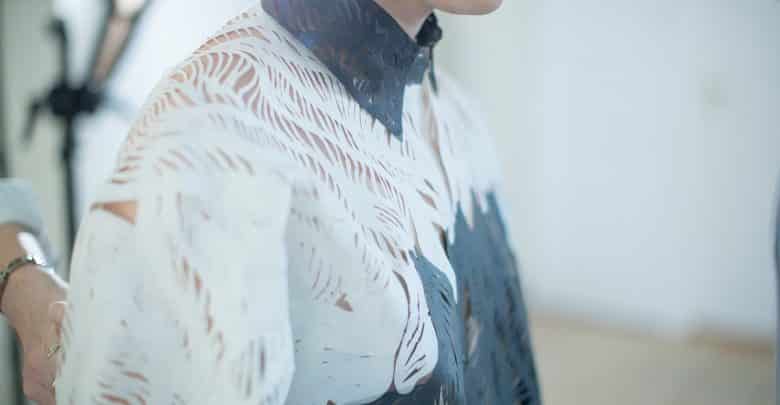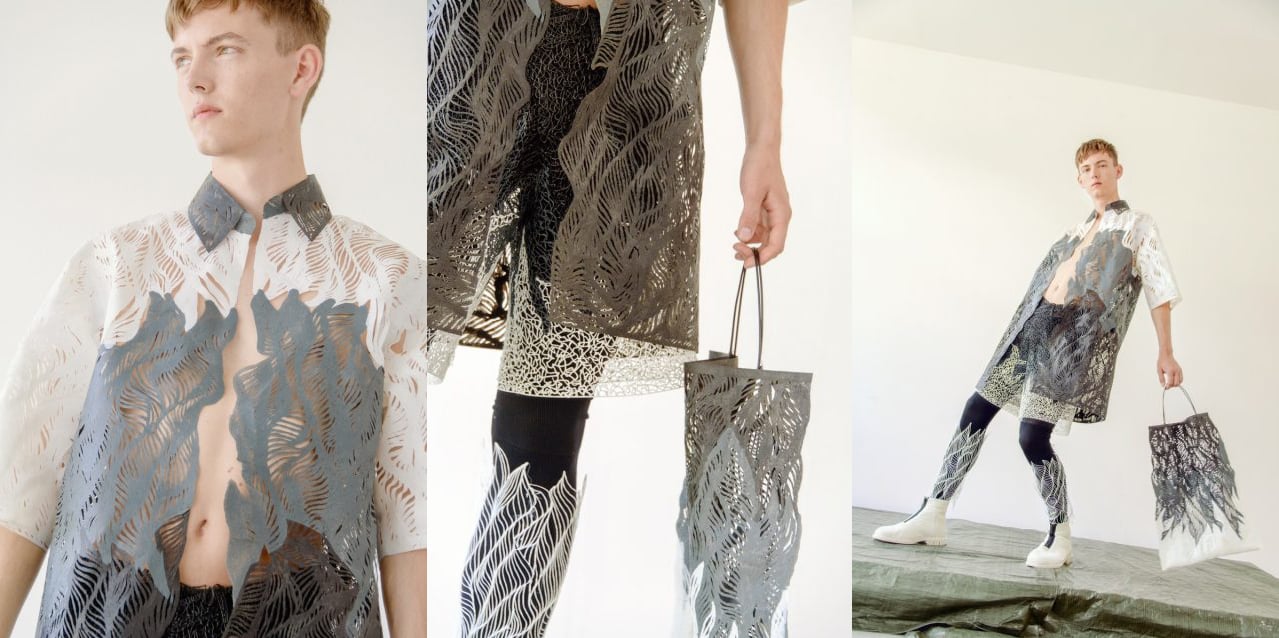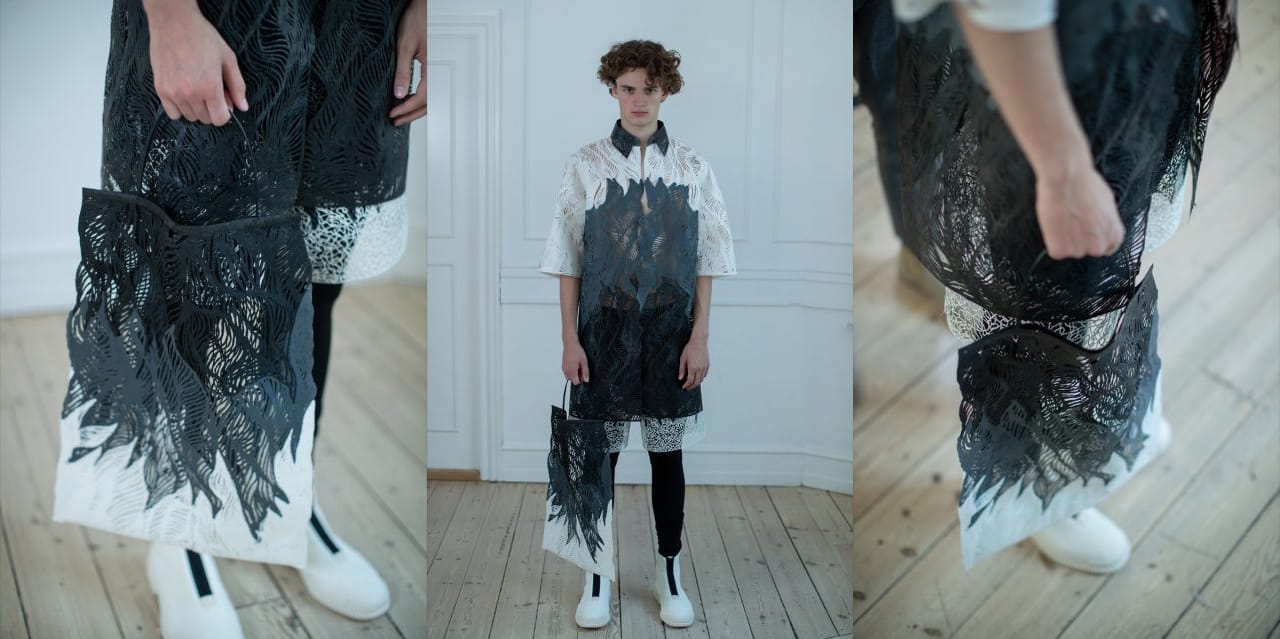Mats Beckman, a student at the Royal Danish Academy of Fine Arts in Copenhagen, contacted 3dpbm to let us know his graduation design: the world’s first flexible, compostable men’s suit made with a 3D printer, 3D pen, and hot pressing. This series won the KADK United Nations Sustainable Development Award.
The outfits include short-sleeved shirts, shorts, and related accessories, such as bags and neck and leg decorations. The basic ingredient in the material is non-GMO corn starch. This unique elastic bioplastic is made from compostable materials that have passed the compostability standards of the United States (ASTM D6400) and the European Union (EN 13432).
“In relation to the design itself, I have looked at the properties of the material and created the design from that aspect,” Beckman explained about how the material informed the garments’ designs. “I have used a flexible compostable filament, which is absolutely fantastic, but one of the drawbacks is that it is not breathable, and for that reason, I have prioritized creating a design that is airy, lightweight, and comfortable on the body.”
According to Beckman, this material has heat resistance, cold resistance, and has no negative impact on the composting process at all. The composting process only occurs when four criteria occur simultaneously: the presence of moisture, microorganisms, oxygen and heat. When none of these elements are present, the material remains stable.
First, use a 3D pen to process the material. Beckman created a pattern in which the filament itself becomes thinner and thus becomes more flexible and breathable through the complexity of the geometric pattern. Therefore, it is easier to perform hot pressing to make it thinner. From there, Mats was able to fuse the various parts into one, where all parts and all fusions consisted only of flexible compostable bioplastics.
Through this process, bags and accessories were also created, and buttons, caps, and other details were printed using a 3D printer. Beckman has been engaged in 3D printing for some time, he tried Ultimaker 3D printer and 3D pen technology to all aspects. Promising young designers also have high hopes for 3D printing in the fashion industry.
He says: “I both believe and hope that 3D printing will play a significant role in the fashion industry in the near future, where both our production processes and our way of thinking of fashion design in relation to economics and the environment needs new creative ideas.”
Over the years, we have seen several innovative uses of home or desktop 3D printing in the fashion industry, from Danit Peleg’s clothing to Cornelius Schmitt and Peter Graeff’s latest full 3D printed shoes. However, the project may go further-using touch materials and 3D printing while adding interesting handicrafts (not to mention that this is the first time 3D printing is used in men’s fashion), which opens up more doors to multiple applications.
The designer told us: “I definitely plan to continue to use this 3D method while working with new sustainable materials to explore similar technologies.” “I think there are many opportunities for 3D printing in the fashion industry, so this is just the beginning.”



